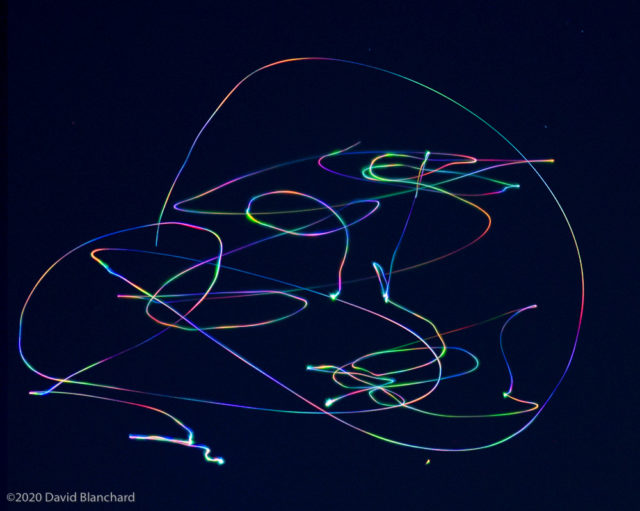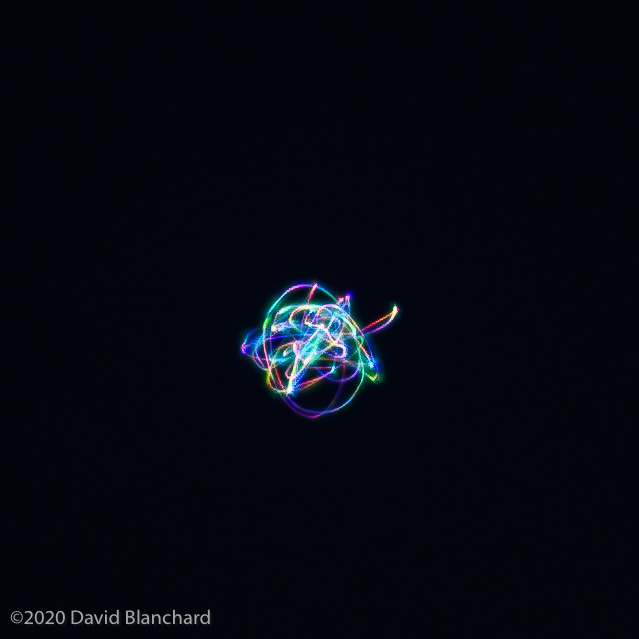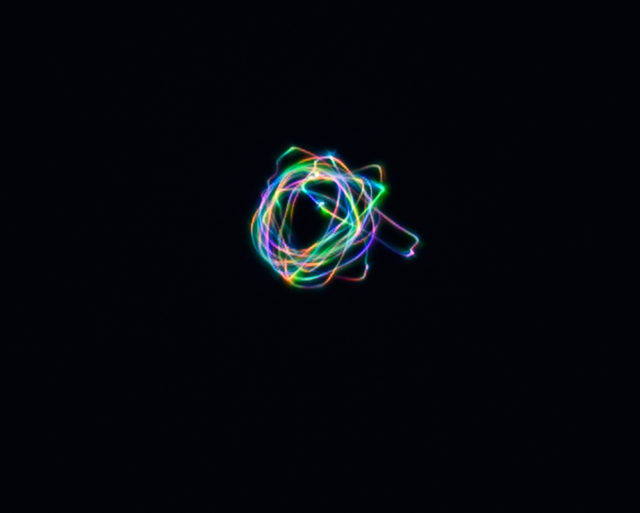A few nights ago I shot photographs of the Moon, Venus, and Mercury triplet in the evening sky. After Venus and the Moon set and twilight had ended, I tried something a little different.



I pointed the camera at Sirius, a very bright star, in the southwestern sky. As the light from the star passed through the atmosphere there was obvious “twinkling” of the star. It was this twinkling that I wanted to capture.
To take the photograph, I set an exposure time of 4 seconds and then loosened the ball head on the tripod so the camera was free to move. As I shot the image, I moved the camera up/down, side-to-side, and in circles. The result is a looping trace of the star rather than a pinpoint image.
This image shows the effect of stellar scintillization or twinkling. Twinkling of stars is caused by the passing of light through different layers of a turbulent atmosphere. Most scintillation effects are caused by anomalous atmospheric refraction caused by small-scale fluctuations in air density usually related to temperature gradients. The effects include both variations in luminance (brightness) and in color.
It can be seen from the images that the changes are occurring over very short time periods (on the order of a second or two) resulting in rapid variations in brightness and, especially, color.
This was an amusing way to end an already enjoyable evening of sky watching.